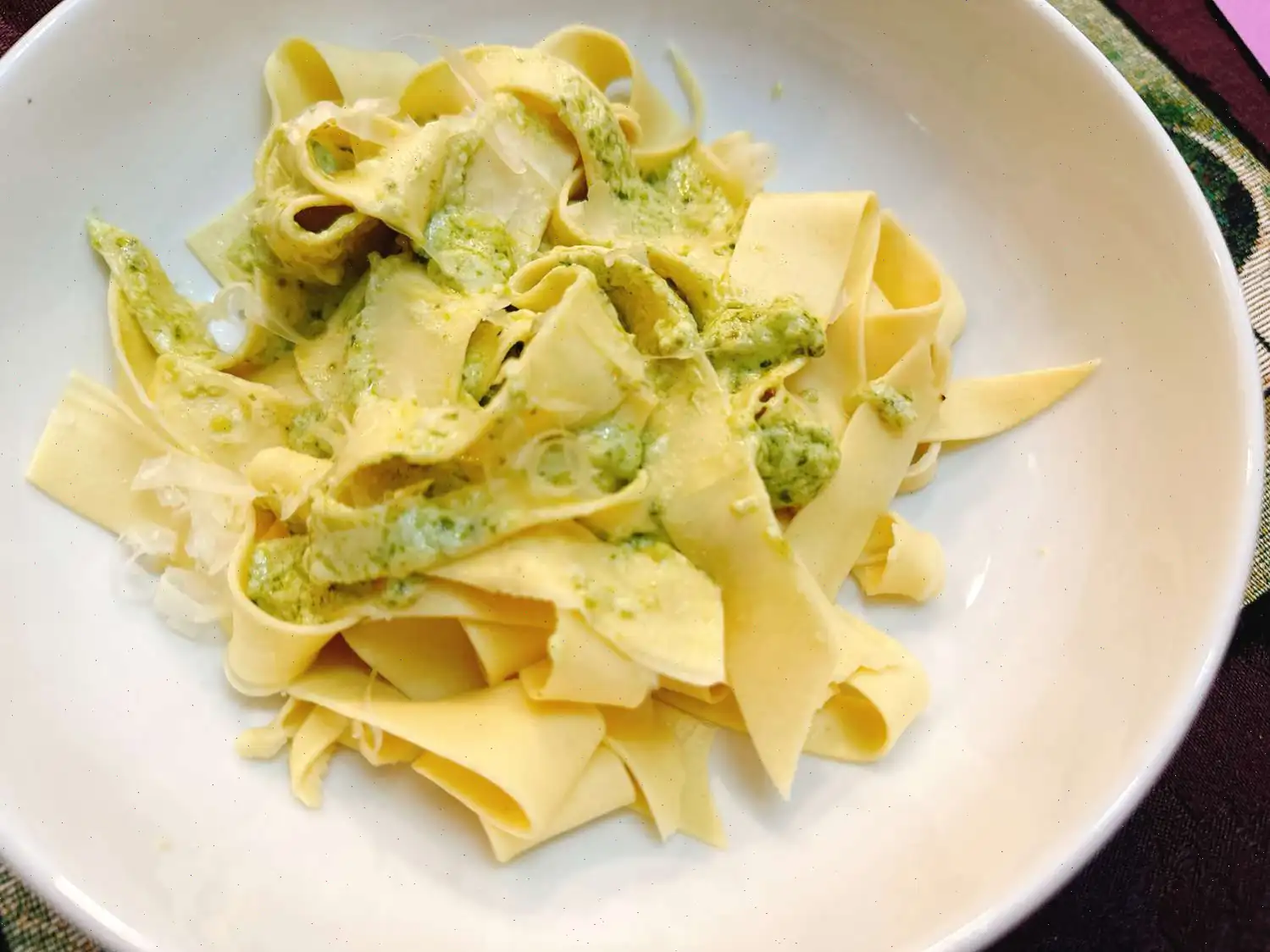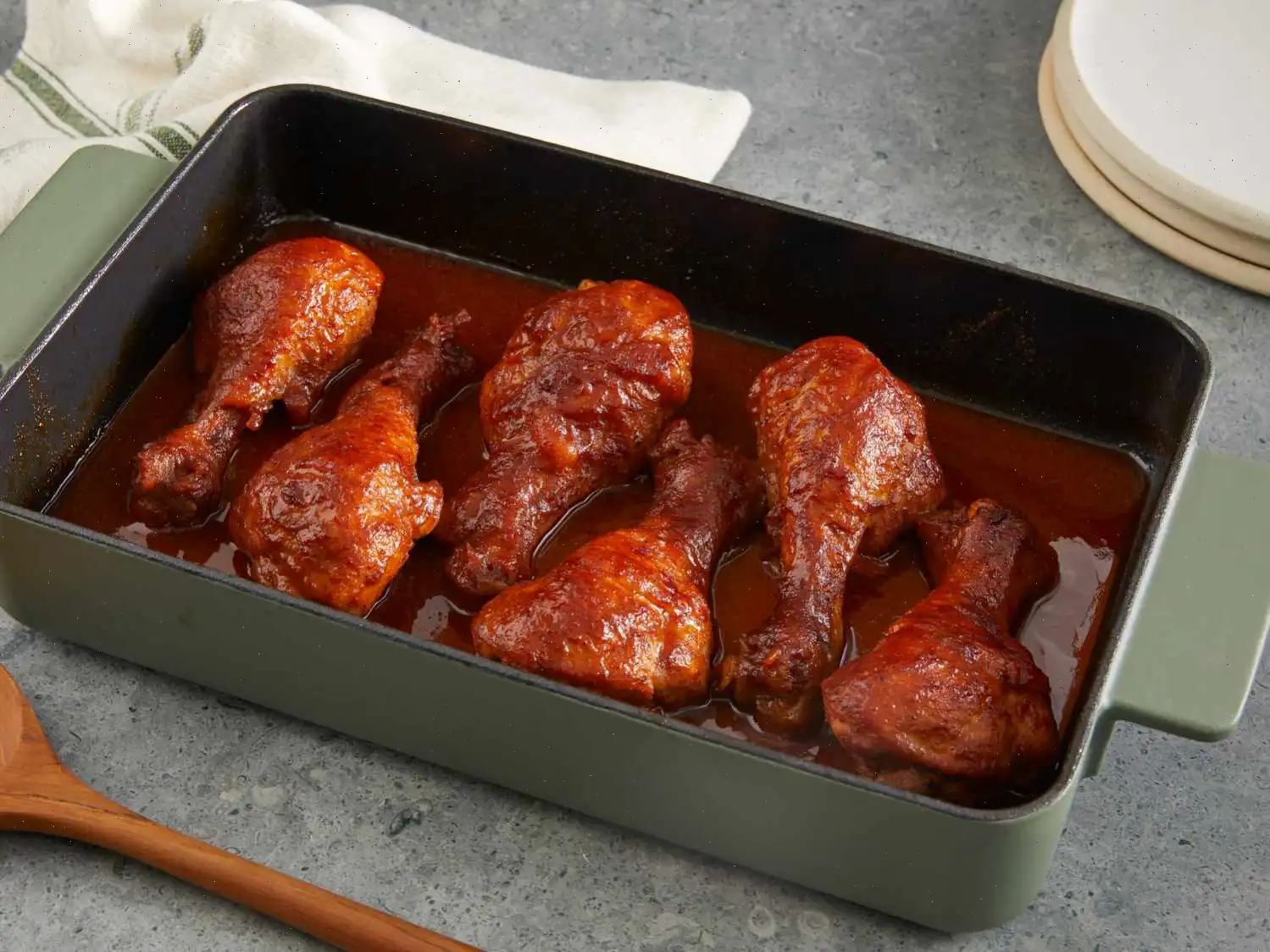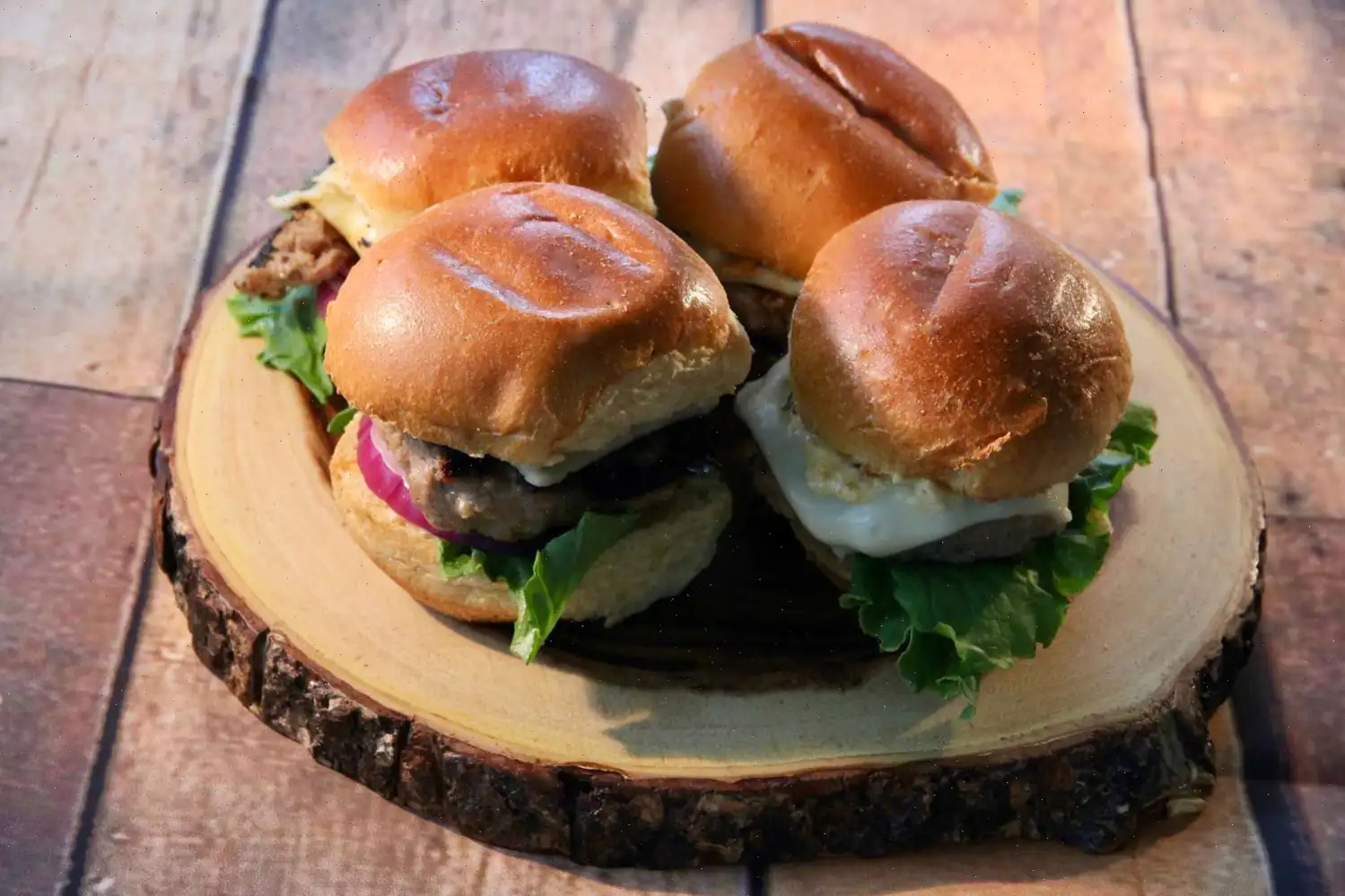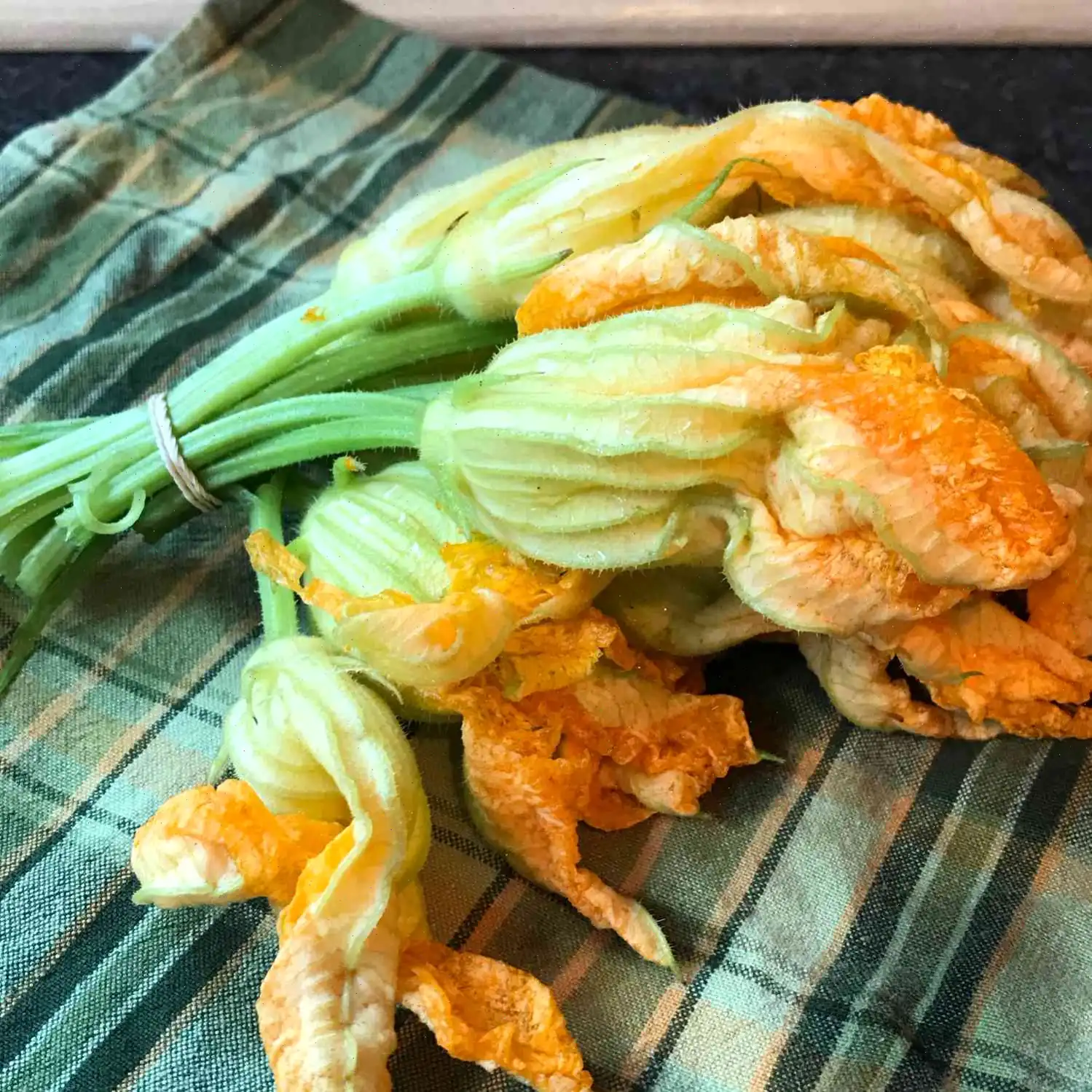
Homemade Pappardelle Recipe
Ingredients:
- 3/4 cup 00 flour, plus more for dusting
- 1/4 cup semolina flour
- 2 large eggs
Directions:
- Combine 00 flour, semolina flour, and eggs in the bowl of a food processor. Pulse until the dough starts to come together.
- Transfer the dough onto a lightly floured cutting board. Knead the dough about 10 times using the palm of your hand.
- Cover the dough with a damp towel and let it rest for 10 minutes.
- Shape the dough into a disc, then wrap it in plastic and refrigerate for at least 30 minutes.
- After chilling, place the dough on a lightly floured surface and dust it with flour.
- Using a rolling pin, start from the center of the dough and roll outward, pushing away from you. Continue until the dough is a thin sheet.
- Tri-fold the dough like a letter: fold one end over 1/3 of the dough, then fold the opposite end over the other 1/3.
- Roll the dough out further until it is thin. Let the dough rest for 5 minutes.
- Loosely roll the dough like a cinnamon roll. Using a sharp knife, cut into 3/4-inch-wide slices.
- Unroll the noodles and dust them with semolina. Gently toss to separate them.
- Bring a large pot of salted water to a boil. Cook the noodles for 1 to 3 minutes, until tender but with a slight bite.
Cooks Note: If you're using a KitchenAid pasta roller attachment, finish the dough on the #5 setting for the perfect texture.
Nutrition Facts (per serving):
| Calories | 221 |
| Total Fat | 4g (5% DV) |
| Saturated Fat | 1g (6% DV) |
| Cholesterol | 124mg (41% DV) |
| Sodium | 48mg (2% DV) |
| Total Carbohydrate | 35g (13% DV) |
| Dietary Fiber | 1g (5% DV) |
| Total Sugars | 0g |
| Protein | 10g (20% DV) |
| Vitamin C | 0mg (0% DV) |
| Calcium | 26mg (2% DV) |
| Iron | 1mg (8% DV) |
| Potassium | 106mg (2% DV) |
Servings per Recipe: 3

Homemade pappardelle is a classic Italian pasta dish that brings a rustic yet refined taste to the table. The broad, flat noodles have an unmistakable texture and are perfect for soaking up rich sauces. In this article, we will explore the origins, regional variations, and fascinating facts about this beloved pasta. Let's dive into the world of pappardelle!
Origin and History
Pappardelle, originating from Tuscany, Italy, has deep roots in Italian culinary tradition. The word "pappardelle" is derived from the Italian verb "pappare," which means "to gobble up," an appropriate term for such a delicious and hearty pasta. Pappardelle was traditionally made by hand and was a staple in rural Tuscan households, where fresh ingredients and simple preparation methods were essential for creating nourishing meals. Initially, pappardelle was paired with wild game sauces, such as rabbit or venison, due to the availability of these meats in the Tuscan countryside.
Regional Characteristics
The preparation of pappardelle varies slightly across different regions of Italy. In Tuscany, the pasta is traditionally paired with rich, meaty sauces like rag made from wild boar or beef. The pasta's broad width allows it to carry the weight of such robust sauces, creating a satisfying mouthful with every bite. In other parts of Italy, like Emilia-Romagna, pappardelle may be used in lighter sauces, though the general technique of preparation remains similarby hand or with the aid of a pasta machine.
Differences from Similar Dishes
While pappardelle shares similarities with other flat pasta varieties like fettuccine or tagliatelle, it stands out due to its width. Pappardelle noodles are typically widerabout 2 to 3 cm (or 1 inch) in widthmaking them ideal for thicker, chunkier sauces. Fettuccine and tagliatelle, on the other hand, are slightly thinner and are often paired with lighter sauces. This unique width allows pappardelle to absorb and hold more sauce, enhancing its ability to capture rich flavors, making it a go-to pasta for heavier meat-based dishes.
Where Pappardelle is Typically Served
Pappardelle is most commonly served in central Italy, especially in Tuscany and Umbria, where it is a cornerstone of the local culinary landscape. It can be found in trattorias and family-owned restaurants throughout these regions, often served with a variety of sauces. While wild boar rag is a classic pairing, it is also commonly enjoyed with a rich mushroom sauce, truffle oil, or even a decadent cream-based sauce. It is not unusual to find pappardelle served during festive meals, such as holiday dinners and celebratory feasts, where the rich flavors are meant to evoke a sense of indulgence and comfort.
Interesting Facts
- Pappardelle is often hand-cut, giving each piece a unique shape and texture. Though some may use a pasta machine, the hand-cut approach is favored by many traditional chefs for its rustic feel.
- The wide shape of pappardelle makes it one of the most versatile pasta types, often used in dishes that require a thicker sauce to coat the noodles.
- In ancient times, pasta shapes like pappardelle were often created as a way to use up leftover dough, which was rolled out and cut into wide strips to make hearty, satisfying meals.
- While pappardelle is most commonly associated with Tuscan cuisine, it is also a favorite in other parts of Italy, particularly in regions where meat-based sauces are prevalent.
Conclusion
Homemade pappardelle is not just a meal; it's a celebration of Italian culinary tradition. Its rich history, regional variations, and ability to carry bold sauces make it a standout dish in the world of pasta. Whether paired with a meaty rag or a simple herb sauce, pappardelle brings a taste of Tuscany to your table. Try making it yourself with the homemade pappardelle recipe, and experience the beauty of authentic Italian pasta!








